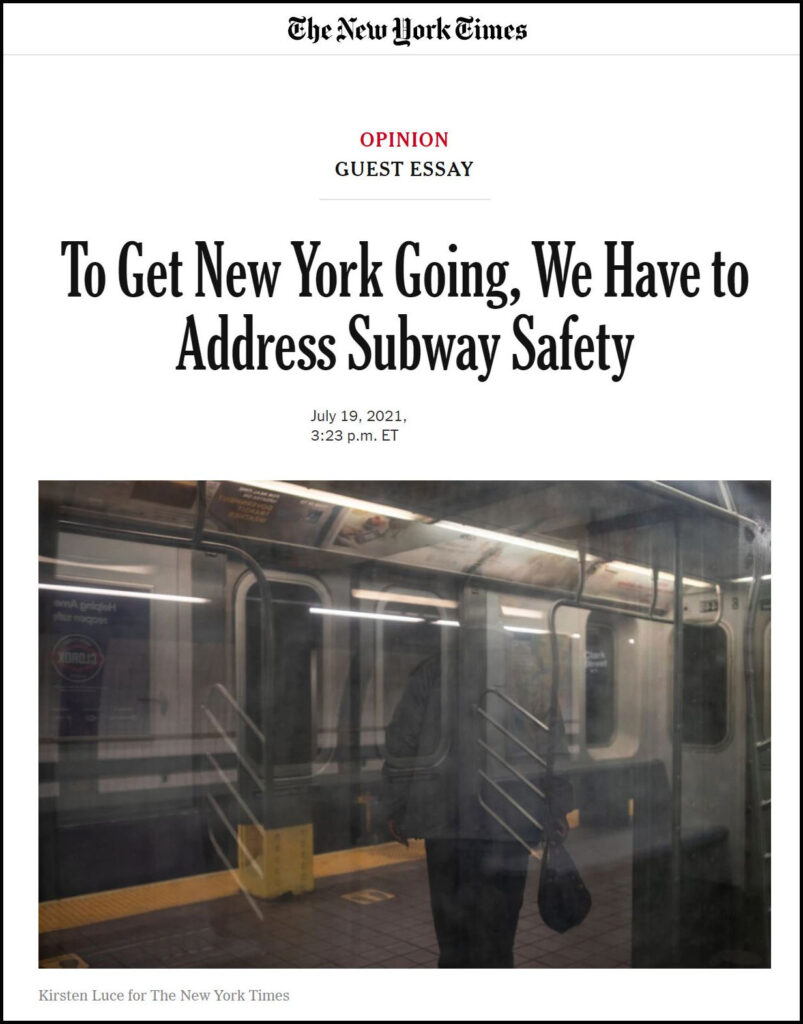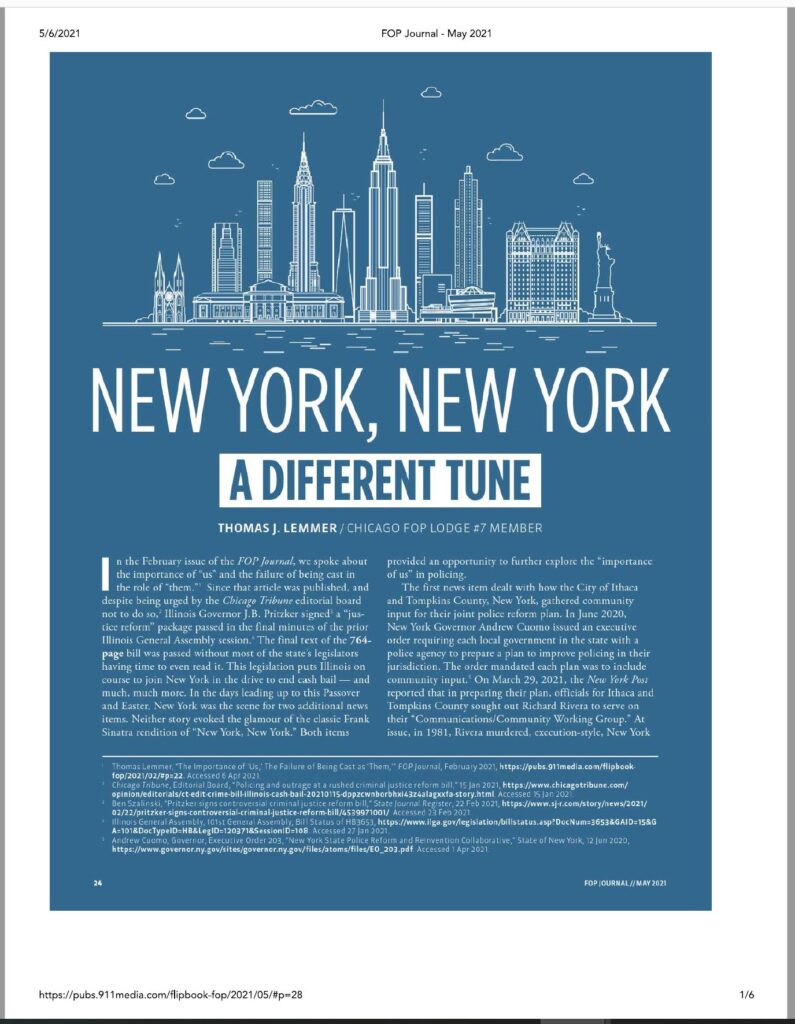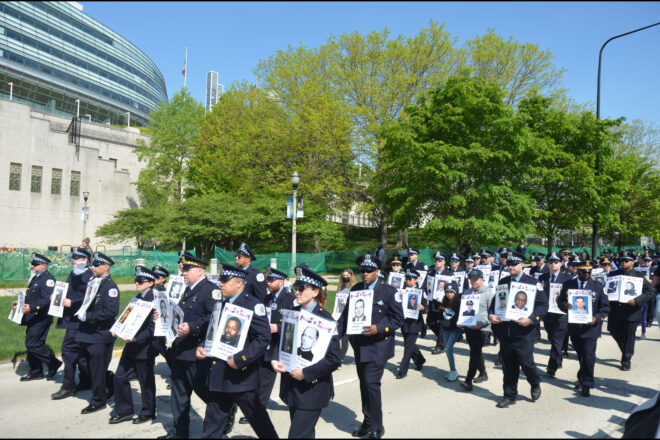This week Nicole Gelinas, from the Manhattan Institute, authored an insightful opinion essay published in the New York Times: “To Get New York Going, We Have to Address Subway Safety.“ Without question subway safety and proactive policing are correlated variables. Gelinas observed that far fewer New York City (NYC) transit riders felt safe in the subway, just 26% as of early 2021. By comparison, in the last quarter of 2019, 65% of riders “felt satisfied with the levels of crime and harassment on trains.” Violent crimes are up and ridership is down dramatically from “pre-pandemic” days. The absence of “safety in numbers” for riders and a turn away from active policing on the system are key factors in the subway safety equation.
Quoting Gelinas: “Fear of the subways partly defined New York in the 1970s and ’80s. Mr. Adams (likely the next NYC mayor) will be judged in part by whether people feel safe — and are safe — on the rails.”

The factors of subway safety and proactive policing are the clear expression of “Broken Windows Theory.” In a 23 June 2021 post here on Secure 1776, we considered an earlier column from Gelinas, “From Broken Windows to Broken Streets.” In that posting we drew out two key findings. Many people have misinterpreted proactive policing strategies that fall within Broken Windows Theory. The objective is not more enforcement for the sake of enforcement. Rather the objective is to communicate that disorder issues that generate a sense of a lawless environment will be addressed. In that effort, more serious offenses are deterred.

As noted in our article by Thomas Lemmer, “New York, New York: A Different Tune,” the police in NYC played a central role during the 1990s in transforming what had been a lawless city. When the NYPD embraced proactive policing, New York City became a safer place – arguably the nation’s safest big city. When the police addressed fare-evasion, public drinking, aggressive panhandling, rampant damage from graffiti, and other signs of disorder – serious crime on the NYC subway system declined. The more recent turn from proactive policing observed in 2020 has been a factor in the rise of serious crime on the city’s transit system.
Even though (and as Gelinas would likely say in part because) there were far fewer riders, between January 2020 and May of this year, 10 people have been murdered in the subway. In contrast, as noted by Gelinas: “Since the late 1990s, the average number of killings on the subways has been one to two annually. In little more than a year, New York has experienced five years’ worth of homicides.”
We acknowledge the conclusion drawn by Gelinas in her NYT opinion essay: “The police must step back up.” But, as Lemmer noted: “As a community, we need our elected and civic leaders to foster unifying approaches that advance constitutional policing, reduce violence, address chronic crime conditions, improve public safety, protect victims, foster wellness, and enhance community support for the police.” In short, appropriate proactive enforcement strategies remain a core element in fostering and maintaining public safety. For this to occur, our elected and civic leaders must also “step back up.”
We are interested in your thoughts, and invite you to comment below.

Copyright Protected | (c) 2021 Secure1776.us – All rights reserved.


Lemmer nailed it. What’s true on the streets is also true in the subway – that is, a publicly supported police department is an essential component of pro active policing. In turn, pro active policing is essential to public safety. Police can not simply sit back and respond to 911 calls. They must challenge and confront suspected wrongdoing before crime occurs. In the current political environment many officers feel unsupported by elected officials and community members and have entered a self preservation mode. We see the results on the news every night. Unfortunately, until the political climate changes, police will continue to be responsive rather than proactive and people will continue to be prayed upon.
Thank you for the positive feedback. An article from Dorothy Schulz and Gareth Bryon published by The Crime Report on 21 July 2021 relates to this post and your comments. The authors, both with experience policing major transit systems, wrote:
When the head of the NY transit worker’s union does not want his own family on the city’s subway system, major alarm bells should be going off for all elected officials with responsibilities that include the transit system. It is the equivalent of a restaurant chef recommending that people not eat the food in the restaurant the chef works. Never a good sign.
Schulz and Bryon noted: “there is overall agreement that cities will falter in their (post Covid) recovery without safe and secure public transit.” Indeed.
Tom and Jim, you are both right on the money. Do any of our elected officials have the fortitude to address the communities they serve. Are any of them willing to have open dialogue with their constituents to address to the crime and disorder plaguing their communities. Especially if those communities do not want to hear the truth about what is needed. Today’s politician just wants to point the finger at the police but in the same breath doesn’t want to openly support the police or even look through the policeman’s eye to make their own assessment.